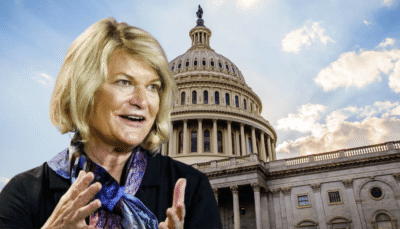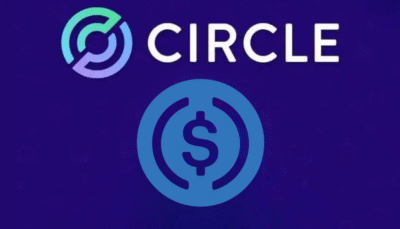On a Thursday marked by a sea of red in the crypto markets, Matthias Mazur opened The CoinRock Show with a grim yet familiar sight: Almost every major cryptocurrency was in decline. Amid the downturn, the conversation shifted from daily price movements to deeper systemic forces shaping digital finance and artificial intelligence.
Joined later by Anish Mohammed, the co-founder and Chief Scientist of Panther Protocol and co-founder of EthicsNet, who also serves as Head of Research at SRH Berlin’s Information Science Institute and maintains multiple advisory roles across technology ventures, the two dissected the technological and regulatory crossroads confronting crypto and AI.
Matthias launched into a rapid-fire market recap, framing current crypto stagnation as an expected phase in the absence of macroeconomic catalysts. “I’ve been saying this for months now,” he reminded viewers, attributing the sluggish momentum to a lack of bullish drivers post-Trump’s pro-crypto policy statements.
His key thesis: crypto markets are liquidity-dependent. “When the Fed tightens, crypto doesn’t do well,” Matthias said, emphasizing how rate policy and quantitative easing (QE) or tightening (QT) define crypto’s trajectory.
Matthias noted its fading credibility by referencing a model developed by the Twitter personality PlanB. “The stock-to-flow model is flawed,” he asserted, aligning with analyst Mati Greenspan’s recent critique. Instead, he urged viewers to track global liquidity metrics. Without a boost in systemic capital, any attempts to market projects into relevance would be futile.
Stablecoin Surge and State Competition
As regulatory narratives intensified, Matthias spotlighted the emergence of stablecoins as a strategic battleground. He cited new entrants like Fidelity’s blockchain-powered stablecoin and Wyoming’s WYST, slated for release by July 2025. Unlike previous cycles, this stablecoin boom isn’t limited to tech companies; state governments are also racing to issue fiat-backed digital tokens.
Matthias explained that distribution, not just backing, is the key to dominance. “Would you hold hundreds of thousands or millions in a stablecoin you just heard about yesterday? Probably not,” he argued, highlighting user trust as a bottleneck. In contrast, Tether (USDT) and USD Coin (USDC) continue to command user confidence, not merely because of reserves but due to established circulation.
The political subtext was unavoidable. Matthias highlighted Senator Elizabeth Warren’s criticism of Trump-associated stablecoin projects and flagged her past anti-crypto positioning. “She literally headed and was one of the main voices for Operation Chokepoint,” he claimed. Yet he pointed to a major contradiction: Warren’s significant personal wealth, implying a broader concern about transparency and accountability among regulators.
Institutions Enter, Regulation Remains Contentious
Beyond policy debates, institutional adoption is accelerating. BlackRock recently announced plans to expand its digital asset division, posting four new job listings focused on blockchain. Matthias characterized this as a defining moment. “They are the masters of the universe,” he said, pointing to BlackRock’s $10 trillion in assets under management.
The sentiment echoed through his coverage of Trump’s SEC nominee Paul Atkins, who disclosed up to $6 million in crypto holdings. “Why on earth would he regulate or put anything in motion that would go against his investments?” Matthias asked rhetorically, leaning on Charlie Munger’s quote: “Show me the incentive and I will show you the outcome.”
The Anish Mohammed Segment: Decentralization and Human Fallibility
Roughly an hour into the broadcast, cryptographer and technologist Anish Mohammed joined the show. With decades of experience spanning AI, cryptography, and blockchain protocols, Anish brought a layered perspective to the table. He recounted his early work mining Bitcoin in London hackerspaces, advising Ripple in 2013, and contributing to Ethereum’s early architecture.
For Anish, decentralization isn’t just a design choice but a reflection of systemic vulnerabilities.
“When you are responsible for hundreds of millions of dollars, your responsibility goes way up,”
He said, speaking on the risks of poorly designed DeFi protocols.
He framed recent hacks as evidence of DeFi’s growing pains, comparing the space’s operational shortcomings to traditional finance’s heavily regulated systems.
In a direct critique of blockchain governance, Anish described most DeFi projects as lacking the maturity and disaster recovery plans required for scale.
“Most people who run these protocols have never worked in a financial institution before,”
he noted.
The result: mission-critical code is frequently managed by under-resourced teams lacking real-world regulatory experience.
Transitioning into AI, Anish offered a stark warning. The global AI race is no longer academic; it’s geopolitical.
“This is AI versus AI, nation state versus nation state,” he said. Regulation, in his view, is a losing proposition unless enforced globally.
“Unless the UN steps in, local AI regulations won’t matter.”
Referencing China’s DeepSeek project, he rejected the notion that China was behind. “They have more AI patents than the US and Europe combined,” he said, citing systematic investment by the Chinese Communist Party after early U.S. export controls. According to Anish, Western democracies are squandering opportunities by over-regulating or failing to coordinate AI research across borders.
He criticized the European Union specifically for stifling innovation through bureaucratic bottlenecks.
“Europe absolutely doesn’t allow scaling,”
He said.
Even well-intentioned policies like MiCA end up deterring capital formation. He further underscored Europe’s shortcomings by highlighting how few European unicorns exist relative to the U.S. and China.
As the conversation wound down, Anish returned to the convergence of crypto and AI. He advocated for privacy-preserving cryptographic systems that could be layered onto AI tools, enabling traceable, verifiable computation. Without such infrastructure, explainability and accountability in AI would remain elusive.
Matthias and Anish agreed that macroeconomic uncertainty, regulatory positioning, and geopolitical competition over emerging technologies will shape the next crypto cycle. Whether discussing stablecoins or sovereign AI strategies, both men made one point clear: the future of crypto and artificial intelligence won’t be decided by isolated actors but by a global contest for trust, power, and coordination.
Where You Can Find Anish Mohammed
You can connect with Anish Mohammed on various social media platforms and explore his work through his professional and academic profiles. Here are his verified profiles:
- Official Website: https://anish-mohammed-shs2.squarespace.com/
- X (Twitter): @anishmohammed
- Substack: @anishmohammed
- LinkedIn: Anish Mohammed
- Medium: https://medium.com/@anishmohammed
- Speakerhub: https://speakerhub.com/speaker/anish-mohammed




